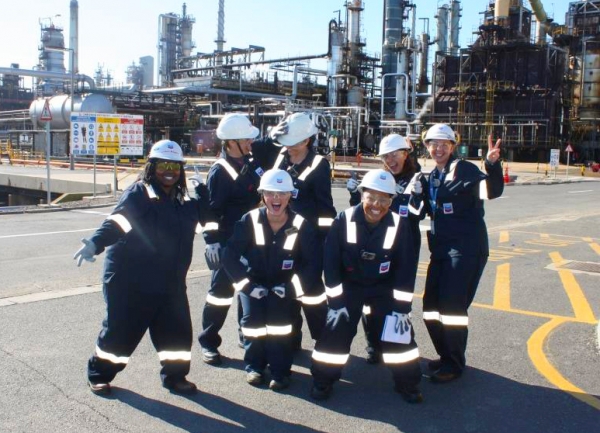Chevron Site Visit


Chevron Site Visit
Written by Bernelle Verster
Attended by Tayana Raper, Madelyn Johnstone-Robertson, Sharon Rademeyer, Bernelle Verster, and Valentina Russo.
CeBER are involved in research on 'wastewater biorefineries', and central to this, is reactor design – a key focus of Tayana Raper’s thesis. A portion of her work is focused on the moving bed biofilm reactor (MBBR). Thus far, it has proven very difficult to find one in operation in South Africa. After much sleuthing, Tayana discovered that the Chevron plant in Plattekloof has one of these systems. Tayana and some of the WWBR teammates decided that this presented an apt opportunity for a visit, but the admission process was more challenging than anticipated. After contacting all possible sources to garner information on visiting Chevron, the team finally received a positive response from the PR department.
Once the administrative matters had been conquered, identities confirmed, breathalysers administered and the rules & safety regulations clearly communicated, the group were finally admitted onto the plant. The tour began in the meeting room, where Andy Redman, the Lead Process Engineer, seemed flabbergasted to face 5 female engineers. He kindly answered some general questions (about 65% of the engineering complement at the site is process engineers) before handing over to two of their female engineers who manage the wastewater treatment plant - Linkie Magoro and Jacqui Annetts. After an extensive interrogation session with them, the CeBER ladies were then taken on the MBBR visit.
The MBBR plant is small and beautiful, roughly 9 years old. There are two parallel reactor units each of 560 m3 capacity, and a hydraulic residence time of 5.6 hours. The flow is approximately 100 m3 per hour. Linkie expressed that her greatest trial occurs when the main plant shuts down or changes feeds, as this alters the wastewater composition. Her biggest daily contest is to maintain the pH, and there is never enough alkalinity. In spite of these challenges, the plant is remarkably resilient, in all likelihood due to the biofilm community that is well established inside the biofilm carriers. The plant is also adept at removing phenol; a process that deserves more research attention. One fascinating insight, was a slide from the Nalco training manual (the company supplying the chemicals for the MBBR's operation) mentioning that organic coagulants were preferred over inorganic ones, which bodes well for bioproducts produced from the wastewater biorefinery concept.
While there wasn’t enough time for a general tour of the main plant, CeBER hope to arrange a general UCT Chemical Engineering site visit to Chevron in the near future to see the plant in action.
Many thanks to Darren Rix, Chevron's Public Affairs Advisor, for arranging the visit, and Jackie and Linkie who patiently answered all of our questions and spent some of their valuable time showing us around.
